Rather than another before/after style post I thought I might offer up a brief comparison of the three variants of one of Seiko’s most popular calibres, the 25 jewel 6106. The first variant, the 6106A, was introduced in 1967 and was revised twice in the next two years, the 6106B appearing in 1968 and the 6106C in 1969.
This first picture shows all 3 calibres with their rotors and balances removed. The only difference here being that the rotor on the 6106A is held in place by two screws rather than just a single screw in the later calibres.
(Click pictures to enlarge)
Removing the winding bridge reveals the first significant difference, the 6106A does not have Diafix installations on the train bridge for the escape and third wheels as can be clearly seen on the 6106B. (The B & C variants are exactly the same). Under the train bridge, all three calibres are exactly the same.
Turning the calibres over and removing their calendar plates reveals the rest of the revisions… the main plate has Diafix installations for the escape and third wheels for the B&C variants, while regular jewels are used on the 6106A. The shaft of minute wheel for the 6106A is hollow and revolves around a pivot, whereas the minute wheel in the B&C calibres is solid and has it’s own pivot underneath which sits in an additional jewelled hole in the main plate.
Interestingly, on the B&C variants the pallet jewel on the main plate has been fitted with a fixed cap jewel, to prevent contamination perhaps? I can’t think of any other reason.
You can also see that the C variant introduced a quickset mechanism to allow the day as well as the date to be changed by pushing in the crown.
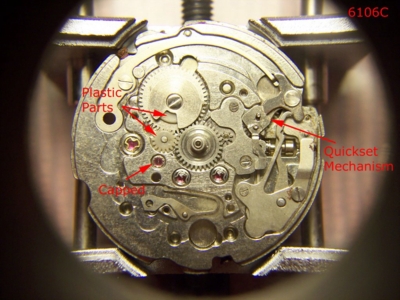
The C variant also makes use of plastic parts which I believe is the first time Seiko used plastic in any of their calibres. Plastic can be useful for low stress parts as it is self-lubricating but at the expense of a shorter lifespan.
Finally, comparing the calendar plates shows the revisions made to the C variant to accommodate the quickset.
The C variant is the only calibre of the three to support a bi-lingual day wheel, the language is changed by advancing the day wheel a half-step through the crown. Notice the difference in shape of the day wheel pusher too.
Ok, that takes care of the differences, but let’s do the maths on the jewels. All these calibres have 25 Jewels, if the B&C variants have 4 extra caps for the Diafix installations, a cap on the dial side pallet jewel and an additional jewel under the minute wheel…. where are the extra 6 jewels in the 6106A??…. Maybe you spotted them? The 6106A has 4 blank jewels embedded in the main plate and 2 more in the calendar plate.
These jewels do little more than increase the jewel count…. very sneaky!
Rich.

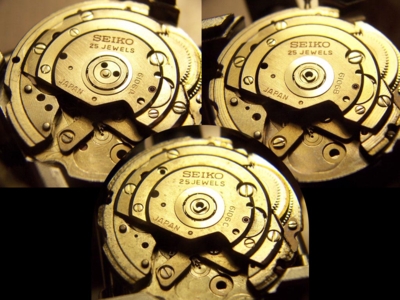
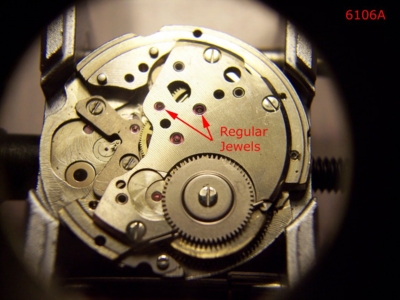
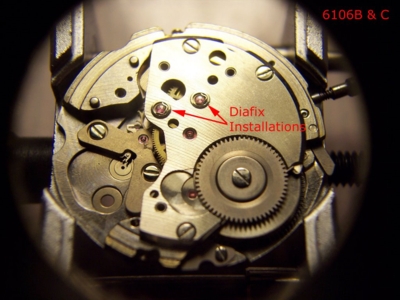
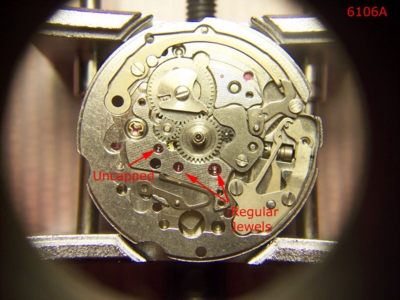
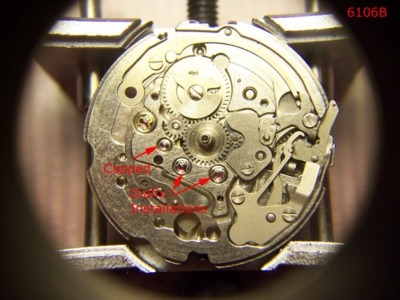
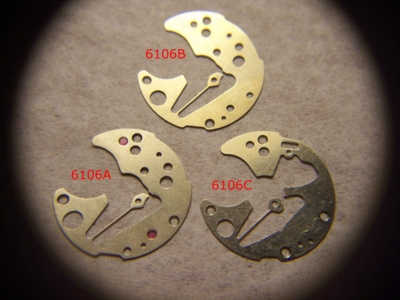
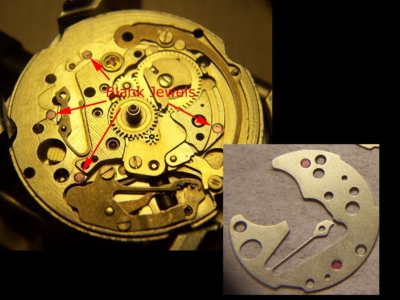
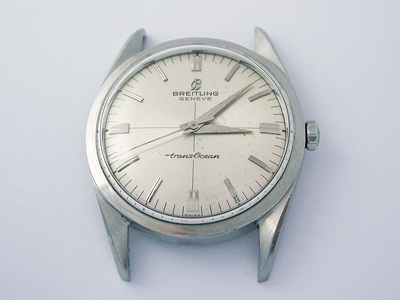
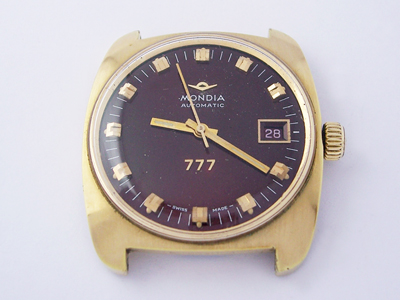
My 6106-8039 has a 6106B movement with 17 jewels. Both the dial and the movement have text indicating 17 jewels. I’ve never seen this black dial on any other watch. Oddly, the case is by Daini while the dial is by Suwa. My uncle bought this new in 1968.
Thanks for the info. The 6106 is one of my favorite movements and partly because of the beautiful cases they put them in.